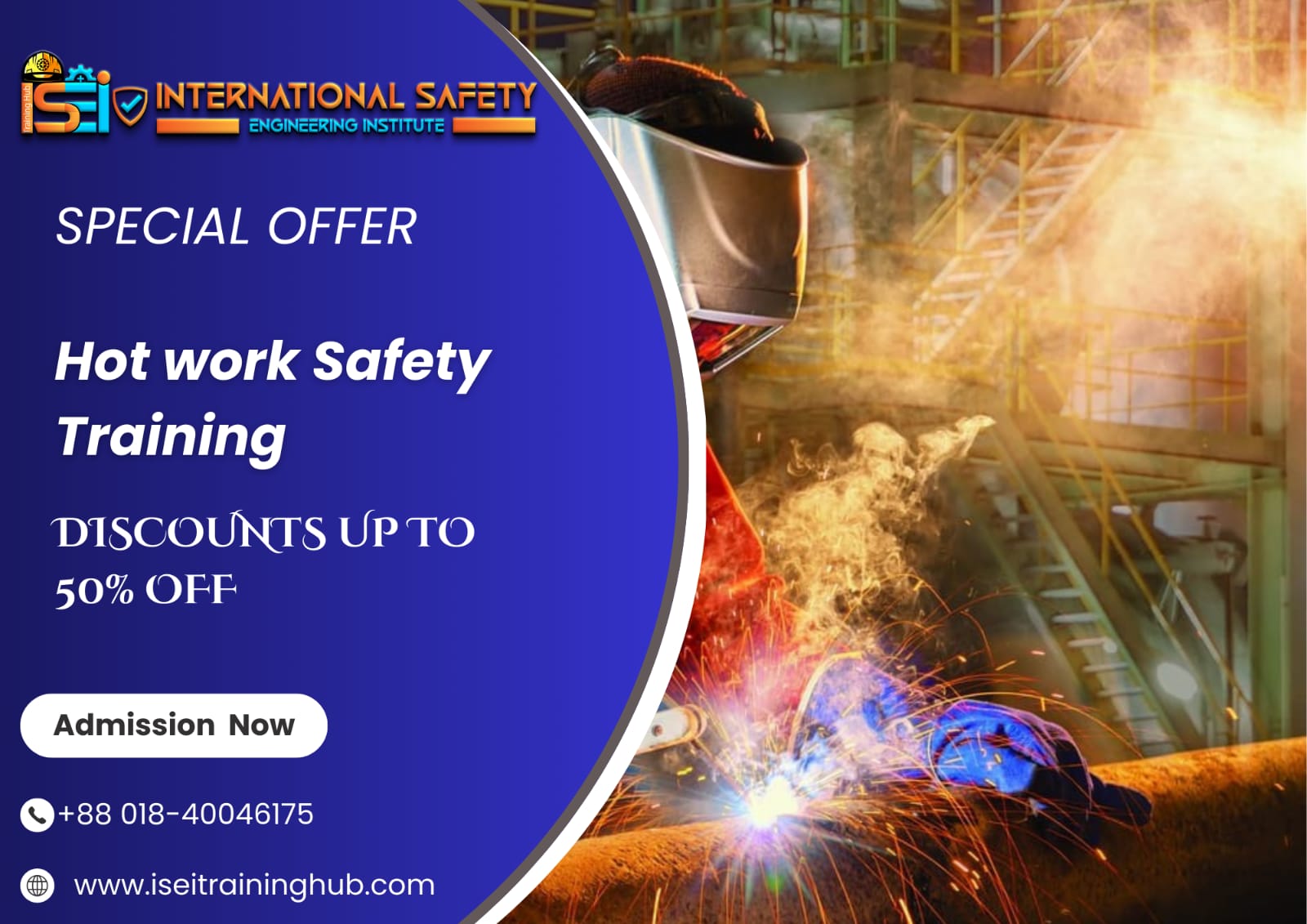Overview
Hot Work Safety training is designed to educate individuals about the risks, hazards, and best practices involved in performing hot work activities such as welding, cutting, grinding, and other operations that generate heat, sparks, or open flames. This training ensures compliance with safety standards, reduces the risk of fire incidents, and promotes a safe working environment.
Course Objectives
- Understand the definition and types of hot work.
- Identify common hazards and risks associated with hot work.
- Learn the safety procedures and control measures to prevent fire incidents.
- Comprehend the importance of obtaining hot work permits.
- Use personal protective equipment (PPE) effectively during hot work activities.
- Recognize the role and responsibilities of firewatch personnel.
- Follow emergency response procedures in case of fire.
Target Audience
This course is ideal for:
- Welders, cutters, and grinders.
- Supervisors overseeing hot work activities.
- Firewatch personnel.
- Facility maintenance workers.
- Anyone involved in hot work operations in industries like construction, manufacturing, and oil & gas.
Course Duration
Duration: 3-4 Days (depending on participant needs and organization requirements).
Key Modules
- Introduction to Hot Work:
- Definition and examples of hot work.
- Industries and environments where hot work is performed.
- Hot Work Hazards:
- Fire risks and ignition sources.
- Potential health hazards (e.g., burns, inhalation of toxic fumes).
- Environmental risks.
- Risk Assessment and Safety Procedures:
- Steps to identify and mitigate hazards.
- Establishing safe zones and isolation techniques.
- Hot Work Permit System:
- Purpose and components of a hot work permit.
- Roles and responsibilities in the permit process.
- Fire Prevention and Control:
- Use of fire extinguishers and suppression systems.
- Role of firewatch personnel.
- Housekeeping and maintaining a clean workspace.
- PPE for Hot Work Activities:
- Types of PPE (e.g., welding helmets, gloves, flame-resistant clothing).
- Proper usage and maintenance.
- Emergency Response:
- Procedures for reporting and responding to fire incidents.
- Evacuation plans and drills.
- Regulatory Standards and Compliance:
- Overview of OSHA, NFPA, and other relevant standards.
Assessment and Certification
Assessment: A combination of quizzes and practical demonstrations.
Certification: Participants who complete the course and pass the assessment will receive a Hot Work Safety Training Certificate valid for one year.
Benefits of the Course
- Enhanced safety awareness and accident prevention.
- Compliance with legal and industry standards.
- Reduction in downtime due to fire-related incidents.
- Improved workplace safety culture.
Why Choose Us?
- Experienced Trainers: Industry experts with practical knowledge.
- Interactive Learning: Hands-on exercises, group discussions, and case studies.
- Global Recognition: Certification from the International Safety Engineering Institute (ISEI).
